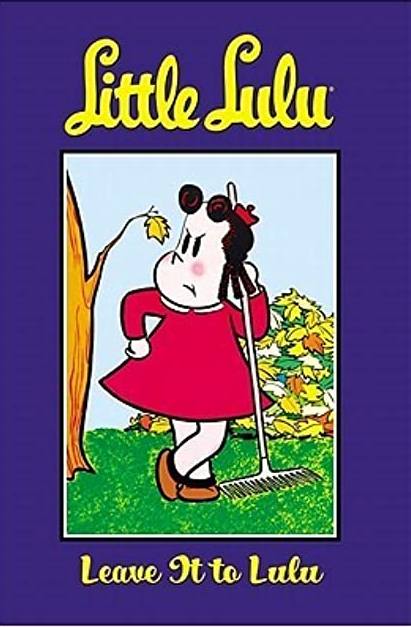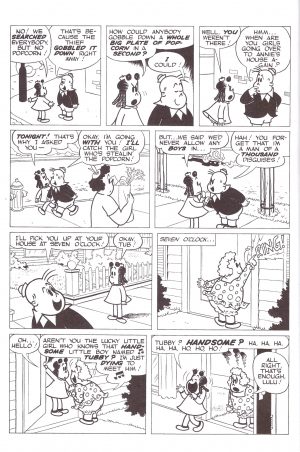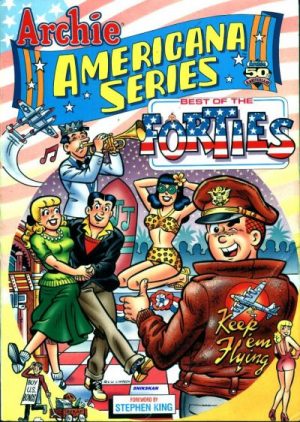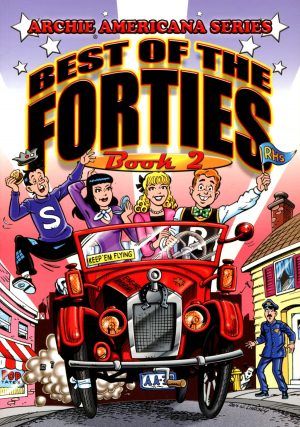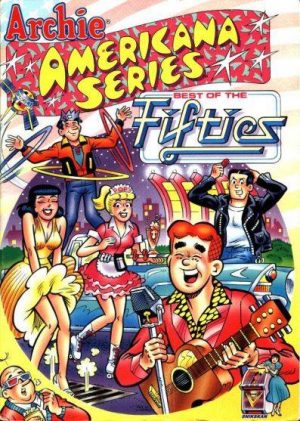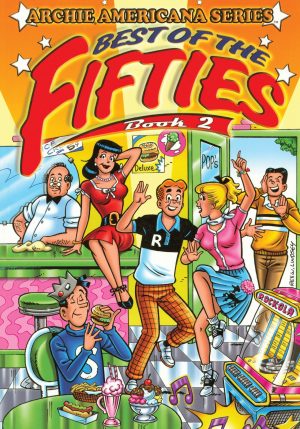Review by Frank Plowright
A joy of Little Lulu is how her adventures ramble all over the place, as John Stanley’s vivid imagination takes flight even within six pages. Lulu on the cover standing by a pile of raked leaves comes from a story beginning with her raking the lawn, before diverting into Tubby having lost his gang’s fundraiser and being appointed Lulu’s slave for a day. As Stanley and Irving Tripp’s work goes, this isn’t an outstanding sample, and for regular Little Lulu readers the ending may even be predictable, but if read in isolation it’s a perfectly plotted farce, packed with jokes and expressively drawn, especially when it comes to Tubby’s grumpy face.
While the compact precision of his everyday stories is to be admired, Stanley’s exotically surreal storytelling talents really come alive when Alvin has to be calmed down by Lulu telling him a story. Those involving Witch Hazel are consistent crowd-pleasers, but perhaps detract from the lunacy of what’s told to placate Alvin without her presence. Always starring a poor little girl drawn to resemble Lulu, in this selection she’s shipwrecked and adopted by a kangaroo, takes a trip to the bottom of the ocean to plug some leaks and invents bizarre combinations of dinosaurs and construction vehicles. Every one of them is astoundingly creative, and it’s worth remembering that in comparison with imaginative children’s book writers Stanley was writing and laying out almost five hundred pages of material in the same period that Dr. Seuss produced fifty pages. In addition to the stories told to Alvin, we’re also treated to the dream of Lulu meeting a ghost.
Occasionally the references are dated, but never to the extent that younger readers of today won’t be able to understand the gist of what’s happening if not the specifics. It’s difficult, for instance, to imagine any modern American father being excited by coming home with a pig knuckle, as Mr Moppet was in 1952, although that’s a neat ramble involving Tubby hunting a rabbit and Lulu subverting the process.
As with other children’s comics of the era, Stanley arranged his stories so the month of their publication reflected the season. This selection begins in the summer with the hilarity of Tubby dressing up as a girl and telling everyone he’s Doreen Dainty from Hollywood (sample art), and ends with Tubby and the gang protecting their clubhouse in the winter. That’s because each issue of Little Lulu also included a Tubby solo outing, a practice continued even after he was awarded his own regular title in 1952.
Leave it to Lulu is stories from early in a golden period that lasted until Stanley’s departure in 1959. Don’t worry, as that’s still another seventeen of these Dark Horse collections. The next is Too Much Fun, which may genuinely live up to the title.
